In late 2020 and throughout 2021, earnings didn’t matter. That statement is a little tongue in cheek, but there were many instances where investors looked beyond bad sales and earnings, or even poor forward guidance, and focused solely on stock buyback plans. It didn’t matter that earnings growth stalled or the CEO expected weaker sales. What mattered to investors was the size of the buyback program. During the downtrend of 2022, buybacks were not the only focus of investors. It was common to see major stocks with double-digit percentage losses due to earnings. Stock investors’ reaction to Netflix’s latest earnings report may signal the bull market is back.
On Tuesday, Netflix disappointed stock holders with weak earnings and revenue and reduced forward guidance. New subscribers fell short of expectations by 500,000. Earnings growth continues to slow markedly. Further, the CEO guided earnings expectations down to $2.84 a share versus prior expectations of $3.07. Per MarketWatch: “Netflix no longer provides guidance on subscriber additions, a sign its years of rapid growth are clearly cooling.” Netflix stock initially swooned by 10%, but ten minutes after releasing earnings, the stock recovered as they expect to accelerate future repurchases.

What To Watch Today
Economy
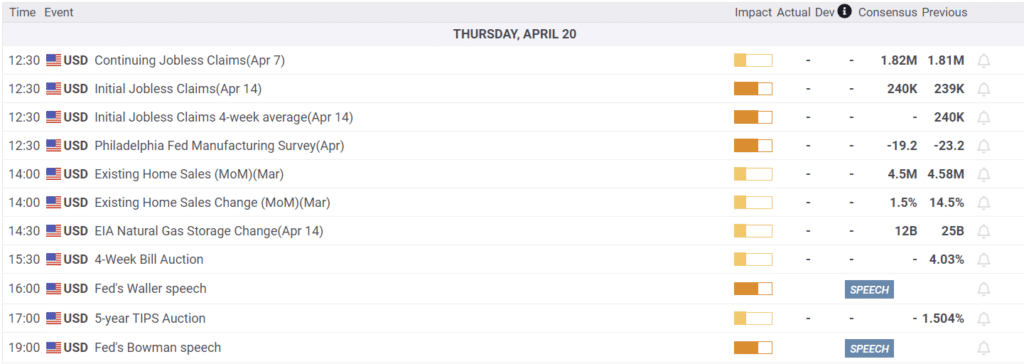
Earnings
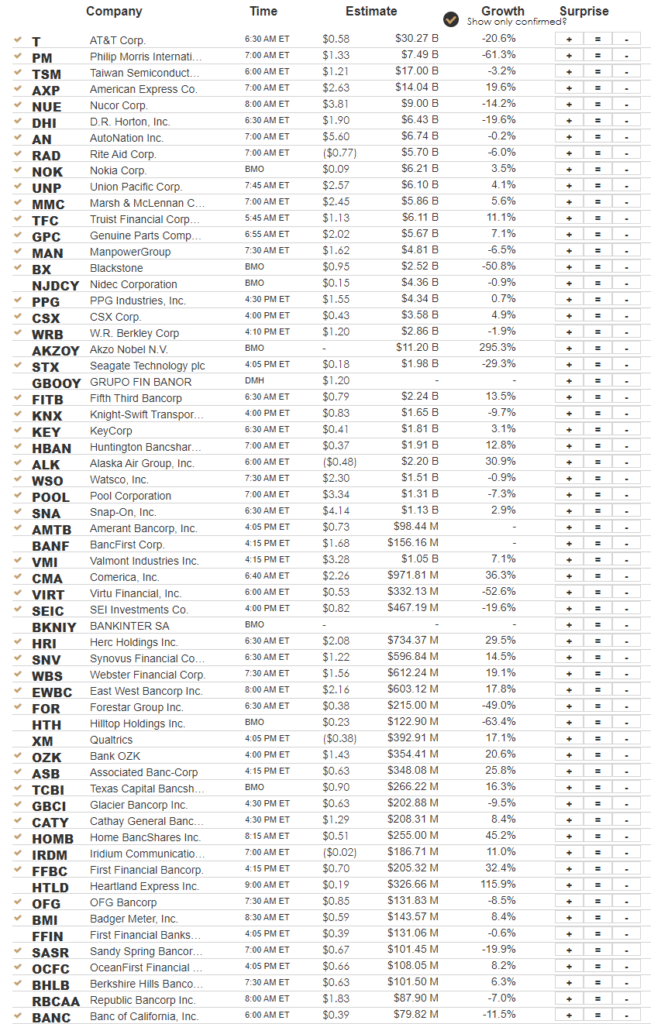
A 10% Correction?
While there is a lot of bearish commentary in markets currently, from a recession to another bank crisis, the market has continued to trade on very bullish footing as of late, registering higher highs and higher lows. More importantly, early sell-offs in the market, like yesterday, are repeatedly met with buyers.
In this weekend’s newsletter, we will discuss the idea of a “rolling recession” scenario, where the economic hits are spread out enough for the credit and financial markets to evaluate, absorb, and “price in” potential event impacts. However, such does not preclude the markets from experiencing recurring 5% to 10% drawdowns as markets continue to adjust for slower economic growth, falling inflation, and weaker earnings.
Such a correction should be acknowledged and expected, as a 10% decline would lead to another retracement to the lows of the bullish trend channel. When the correction eventually comes, and it will, it will likely provide a logical place to add exposure to risk assets from a purely technical perspective.
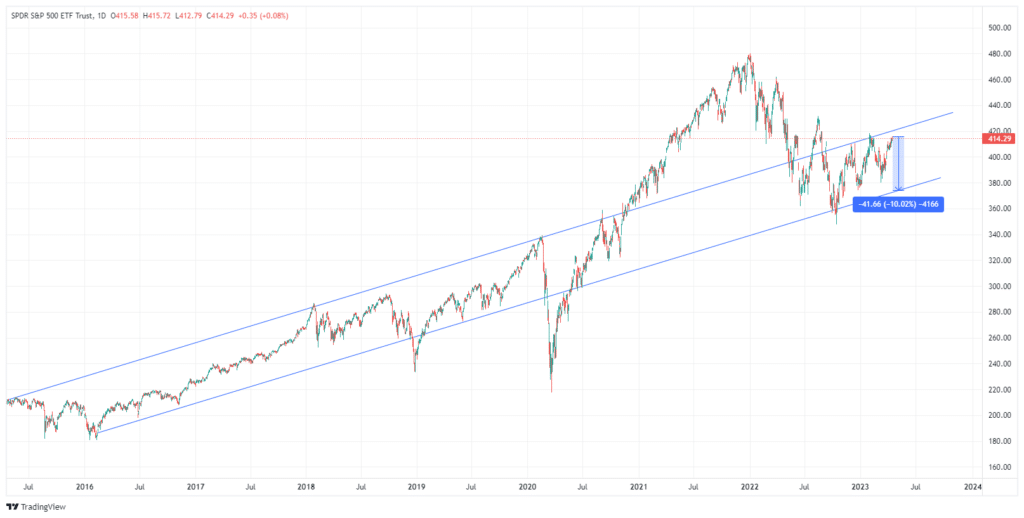
As investors, we should consider the possibility that the markets are more resilient to a decline due to the massive amount of monetary liquidity still floating through the system.
While we have no clue how this eventually plays out, nor does anyone else, we should at least consider the possibility that a more bullish setup could emerge in an environment that is still dominated by bearish sentiment.

Banks are Selling Treasury Securities, Who is Buying?
The graph below shows that commercial bank holdings of Treasury securities are down over 10% annually. Such is the largest percentage decline in 50 years. While the figure is daunting, context is important. The second graph charts their holdings in dollar terms. Their holdings are clearly falling, but in the aggregate, they still own over 30% more than they did pre-pandemic. Thus, the data does lead to an interesting question. If the banks are net sellers and the Fed is reducing its holding, who is buying?
The third graph below, courtesy of The Balance, shows that the “other” category is making up for declines by most traditional holders. “Others” include individuals, insurance companies, and private pension funds. While the data lags, we know that money market funds, which hold a large number of Treasury securities, attracted over $300 billion in March. It’s likely money market assets are still charging higher as individuals move money from banks to money market funds. to chase higher yields.


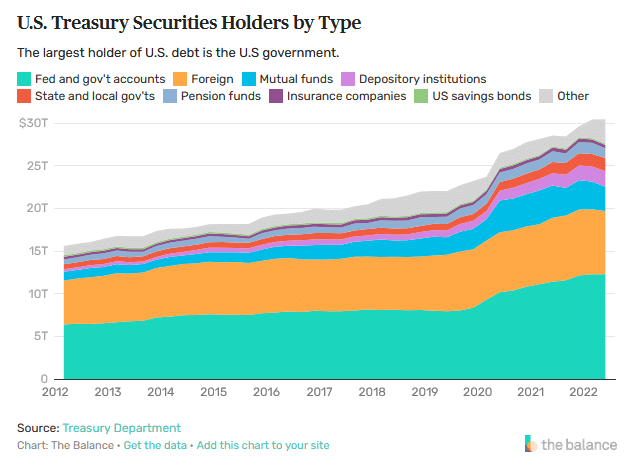
Multifamily Booms While Office Space Flops
The office real estate market is coming under significant pressure, yet multifamily remains hot.
Yesterday Brookfield Corp, one of the largest commercial real estate companies in the world, defaulted on 12 properties totaling $161 million, primarily in the Washington DC area. A few months ago, they defaulted on $785 million on two Los Angeles office buildings. There are more. Per Forbes:
Pacific Investment Management Co. also defaulted on $1.7 billion in office mortgages across major cities like Boston, New York and San Francisco, sending shockwaves through the commercial office industry. Five to 10 more office towers each month become at risk of defaulting because of low occupancy or maturing debt that would have to be refinanced at a higher rate, the Wall Street Journal reported in February.
Unlike office properties getting killed by high mortgage rates and the work-from-home movement, multifamily properties remain in high demand. Per the graph below from Bloomberg, the total number of multifamily housing units under construction is at a fifty-year high.
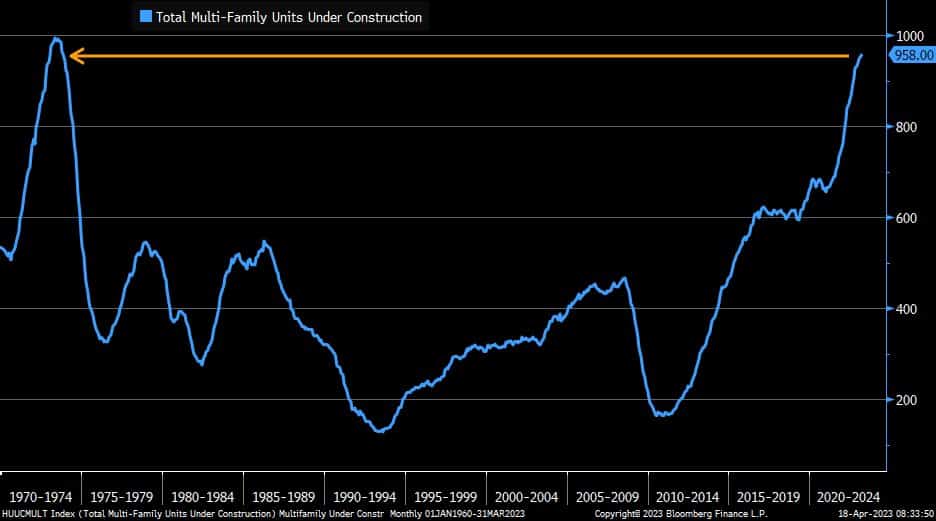
A Coming Slowdown in Auto Lending
“The past 10 days have been wild:
— Capital One shut off all auto dealer floorplans (aka inventory lines of credit)
— USA Auto Sales shut down 39 dealerships after losing its Ally floor plan
— Wells Fargo laid-off all its junior Auto loan underwriters and capped future loans Insanity. “
The following commentary was courtesy of @guydealership.
As we have discussed, financial lending standards ultimately result in less lending. Based on the actions of the three lenders above, it appears they are bracing for a marked slowdown in auto sales. However, as the graph below shows, there is no indication in recent auto sales data of a slowdown.
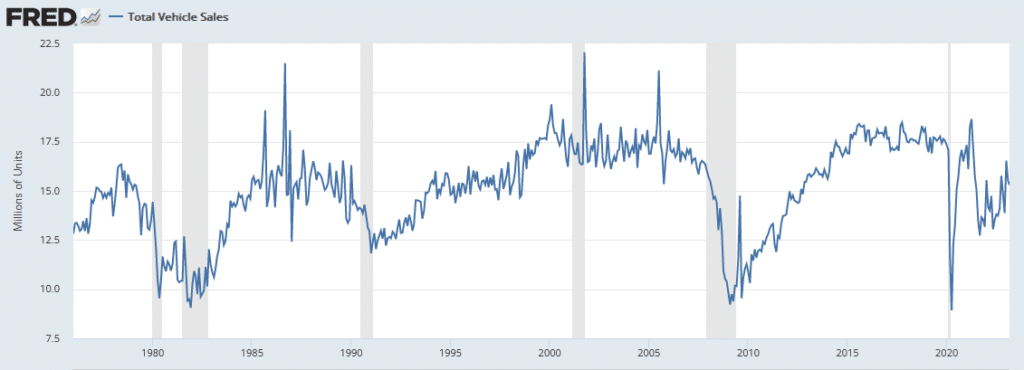
Tweet of the Day

Please subscribe to the daily commentary to receive these updates every morning before the opening bell.
If you found this blog useful, please send it to someone else, share it on social media, or contact us to set up a meeting.


